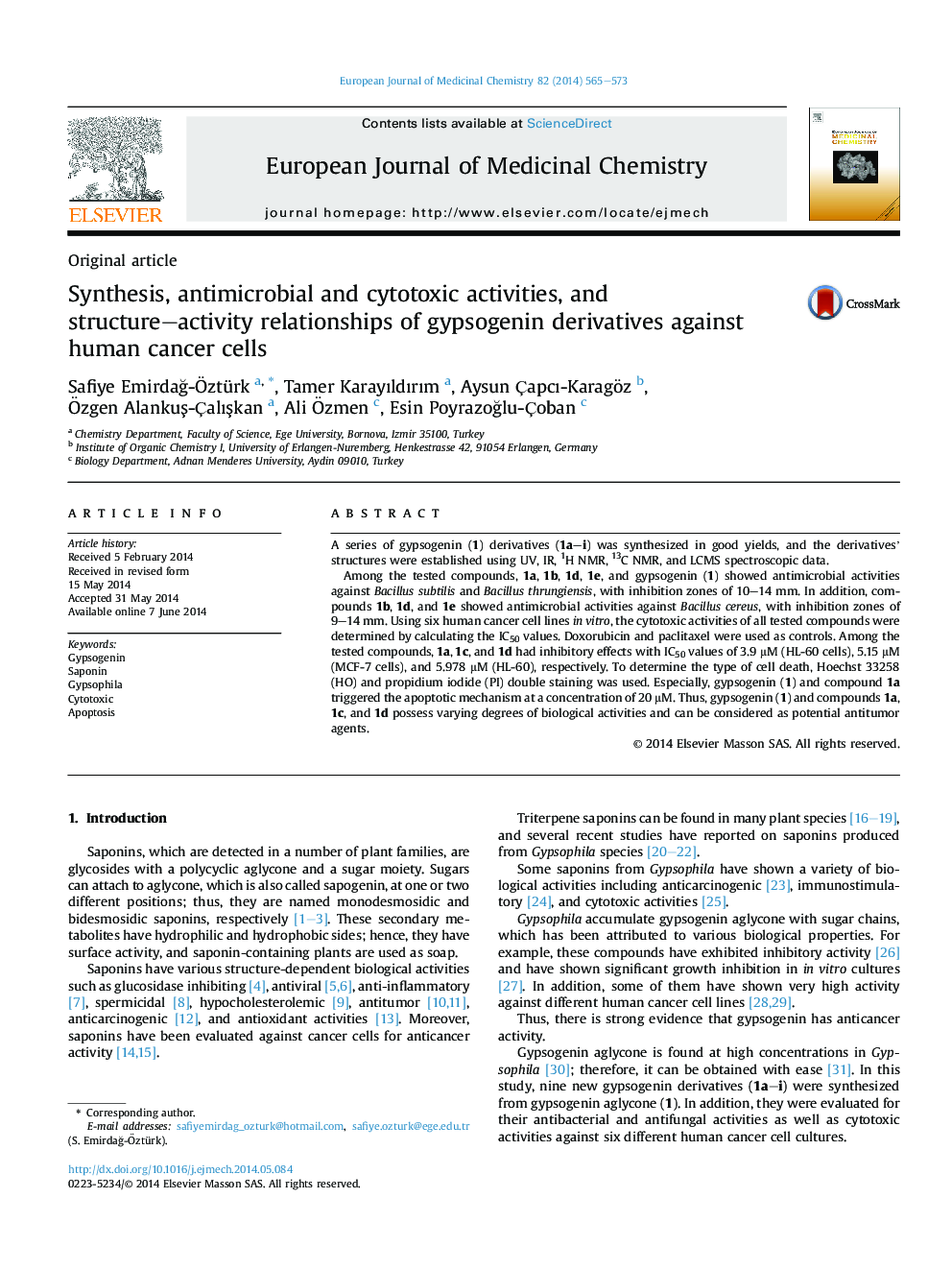| Article ID | Journal | Published Year | Pages | File Type |
|---|---|---|---|---|
| 1395763 | European Journal of Medicinal Chemistry | 2014 | 9 Pages |
•Nine novel gypsogenin derivatives (1a–i) were semisynthesized.•1b, 1d, 1e showed the best antimicrobial activities against Bacillus cereus.•1a 3.9 μM, 1c 5.15 μM, 1d 5.98 μM showed remarkable cytotoxic activity.•Gypsogenin and 1a triggered the apoptotic mechanism at a concentration of 20 μM.
A series of gypsogenin (1) derivatives (1a–i) was synthesized in good yields, and the derivatives’ structures were established using UV, IR, 1H NMR, 13C NMR, and LCMS spectroscopic data.Among the tested compounds, 1a, 1b, 1d, 1e, and gypsogenin (1) showed antimicrobial activities against Bacillus subtilis and Bacillus thrungiensis, with inhibition zones of 10–14 mm. In addition, compounds 1b, 1d, and 1e showed antimicrobial activities against Bacillus cereus, with inhibition zones of 9–14 mm. Using six human cancer cell lines in vitro, the cytotoxic activities of all tested compounds were determined by calculating the IC50 values. Doxorubicin and paclitaxel were used as controls. Among the tested compounds, 1a, 1c, and 1d had inhibitory effects with IC50 values of 3.9 μM (HL-60 cells), 5.15 μM (MCF-7 cells), and 5.978 μM (HL-60), respectively. To determine the type of cell death, Hoechst 33258 (HO) and propidium iodide (PI) double staining was used. Especially, gypsogenin (1) and compound 1a triggered the apoptotic mechanism at a concentration of 20 μM. Thus, gypsogenin (1) and compounds 1a, 1c, and 1d possess varying degrees of biological activities and can be considered as potential antitumor agents.
Graphical abstractFigure optionsDownload full-size imageDownload as PowerPoint slide
